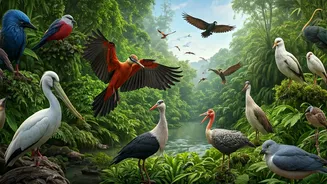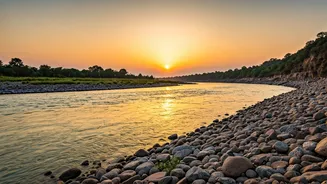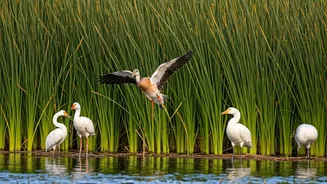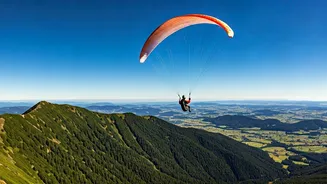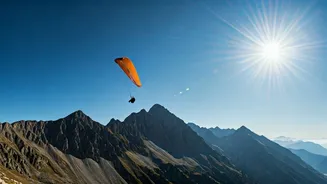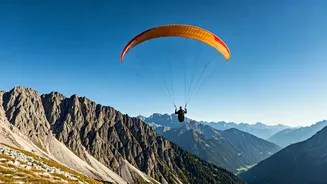Introduction: Avian Wonders
Maharashtra, with its varied topography and climate, is a prime location for birdwatching. The state's protected areas provide crucial habitats, allowing
a wide array of bird species to thrive. These sanctuaries not only support diverse bird populations but also contribute to conservation efforts. Birdwatchers, both seasoned and novice, find immense joy in observing these creatures in their natural environments. Planning a trip to these sanctuaries provides an enriching experience, connecting one with nature and offering a glimpse into the beauty of the bird kingdom. Each sanctuary possesses its own unique charm, providing a distinctive experience for visitors.
1. Karnala Bird Sanctuary
Karnala Bird Sanctuary, situated near Mumbai, is a quick escape into nature. Covering an area of about 12 square kilometers, this sanctuary is known for its dense forests and diverse bird species. Popular birds include the Malabar whistling thrush, various woodpeckers, and several raptors. The ideal time to visit is during the monsoon and winter months, when the weather is pleasant and bird activity is at its peak. Karnala's close proximity to Mumbai makes it accessible for day trips, offering an easy way for city dwellers to experience birdwatching. The presence of the Karnala Fort adds a historical dimension to the natural beauty, creating a unique blend of heritage and wildlife viewing opportunities.
2. Bhigwan Bird Sanctuary
Bhigwan Bird Sanctuary, located in the Pune district, is particularly famous for its migratory birds, especially flamingos. The backwaters of the Ujani Dam form the main habitat, attracting a large number of birds during the winter. Aside from flamingos, one can spot various waders, ducks, and other migratory species. November to March is the best period to visit, when the birds arrive in large numbers. Boat rides are a popular way to explore the sanctuary and get close to the birds. The sanctuary provides a crucial resting and feeding ground for these long-distance travelers, making it a critical site for conservation efforts and bird study.
3. Mayani Bird Sanctuary
Mayani Bird Sanctuary, situated in Satara district, is another important location for bird enthusiasts. This sanctuary features a lake and surrounding wetlands, attracting both local and migratory birds. The area is known for its diverse species, which includes various waterfowl and land birds. The best time to visit Mayani is from October to March, with winter months offering the highest birding opportunities. The sanctuary provides ample opportunities for photography and bird study, allowing visitors to observe and appreciate birdlife up close. The environment is especially important for conservation due to providing a home to many bird species.
4. Jayakwadi Bird Sanctuary
Jayakwadi Bird Sanctuary, created around the Nath Sagar reservoir, is located in the Aurangabad district. The reservoir provides a significant wetland habitat, which draws numerous bird species, including water birds and migratory ducks. It’s an ideal spot for ornithologists. The sanctuary is most vibrant during the winter, offering chances to see a wide range of avian life. The dam's environment is also important for providing a water source for the birds. Jayakwadi's position makes it easily accessible to visitors from many different cities, making it a well-known spot for nature lovers.
5. Great Indian Bustard
The Great Indian Bustard Sanctuary, though primarily dedicated to the conservation of the Great Indian Bustard, offers opportunities to see several other bird species. Located in the Solapur district, this area presents a unique habitat suitable for the endangered bustard. This sanctuary is very valuable for the country, because of the preservation of this specific species. The ideal time to visit is during the cooler months, when the bustards are most active. While the focus is on conservation, the sanctuary also offers a great birding experience, with the chance to see other bird species in their natural habitat. This sanctuary is a key part of protecting endangered species and highlights how critical these areas are.
